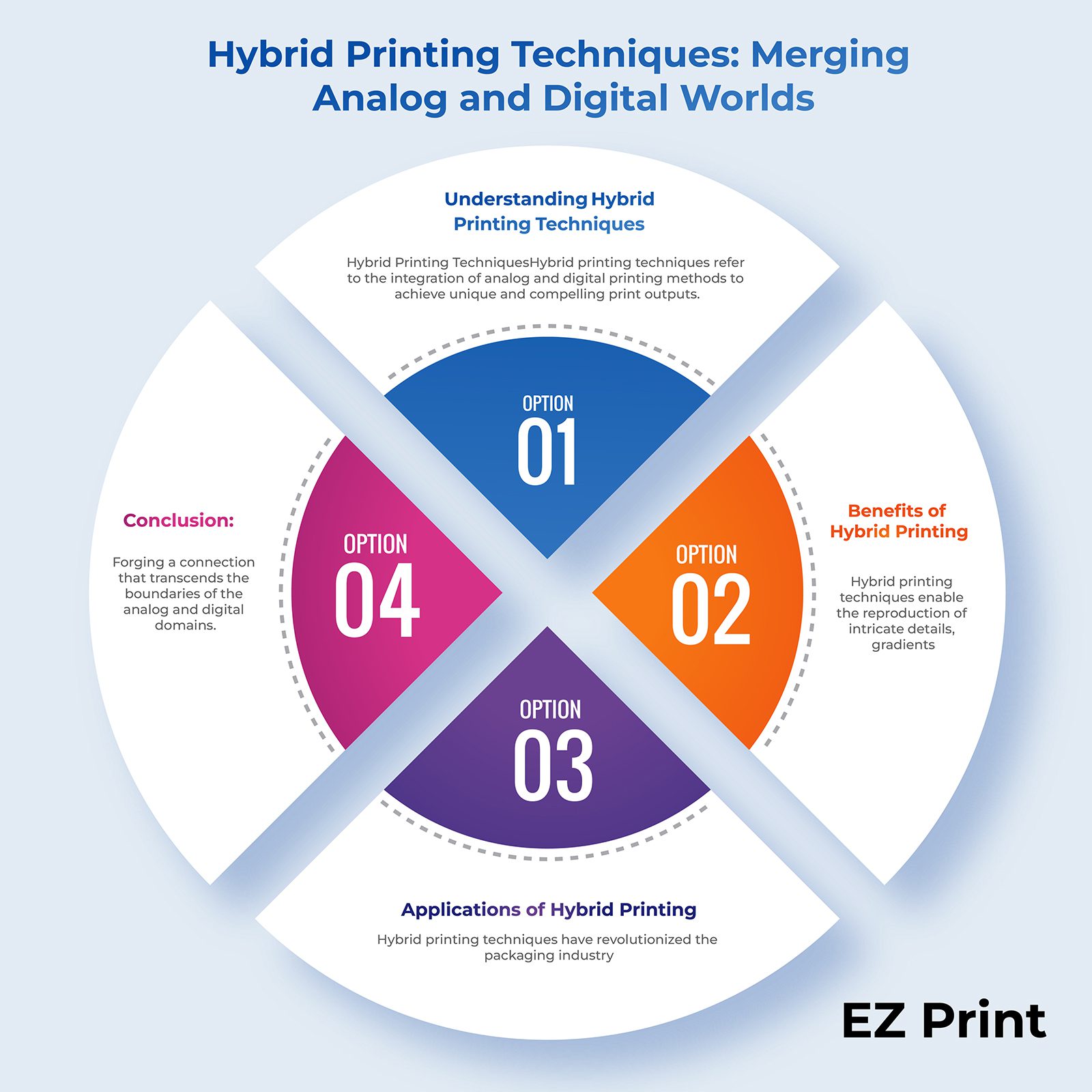
In today’s rapidly evolving technological landscape, the blending of analog and digital worlds has become a dominant trend. The printing industry, in particular, has witnessed a significant transformation with the emergence of hybrid printing techniques. This innovative approach combines the best aspects of traditional analog printing methods with the versatility and precision of digital printing technologies. In this blog post, we will explore the concept of hybrid printing, its benefits, and its impact on the printing industry.
Understanding Hybrid Printing Techniques
Hybrid printing techniques refer to the integration of analog and digital printing methods to achieve unique and compelling print outputs. By combining the strengths of both approaches, hybrid printing allows for greater flexibility, customization, and quality. This approach enables printers to leverage the inherent qualities of analog printing, such as texture and tactile experience, while harnessing the digital capabilities for enhanced precision, variable data printing, and faster turnaround times.
Benefits of Hybrid Printing
- Enhanced Print Quality: Hybrid printing techniques enable the reproduction of intricate details, gradients, and vibrant colors with unparalleled accuracy. By blending analog and digital processes, printers can achieve exceptional print quality that surpasses traditional methods.
- Customization and Personalization: With hybrid printing, each print can be tailored to meet individual preferences. Variable data printing allows for the incorporation of personalized information, such as names, addresses, or even images, ensuring a unique experience for each recipient.
- Cost Efficiency: Hybrid printing optimizes resources and reduces production costs. Digital printing minimizes setup time and waste associated with traditional printing methods, while analog techniques offer cost-effective solutions for larger print runs.
- Versatility and Innovation: The marriage of analog and digital printing opens up new creative possibilities. Printers can experiment with unique finishes, textures, and embellishments, creating visually stunning and captivating prints that stand out from the crowd.
Applications of Hybrid Printing
- Packaging and Labels: Hybrid printing techniques have revolutionized the packaging industry. With the ability to combine flexographic or gravure analog printing with digital printing, packaging designs can now incorporate intricate details, vibrant colors, and variable data elements.
- Fine Art Reproduction: Hybrid printing has transformed the fine art industry, allowing artists to reproduce their work with exceptional accuracy and quality. The integration of traditional printing methods with high-resolution digital scans ensures that each reproduction captures the essence and details of the original artwork.
- Commercial Printing: Hybrid printing techniques have found applications in various commercial printing segments, such as brochures, catalogs, and promotional materials. The ability to customize prints with variable data and produce high-quality outputs efficiently has made hybrid printing an attractive choice for businesses.
Conclusion:
Forging a connection that transcends the boundaries of the analog and digital domains. EZ Print offers enhanced print quality, customization, and cost efficiency, opening up new avenues for creativity and innovation. As hybrid printing continues to evolve, we can expect to see further advancements and applications across different sectors. The fusion of analog and digital printing in the form of hybrid techniques truly represents the future of the printing industry.


